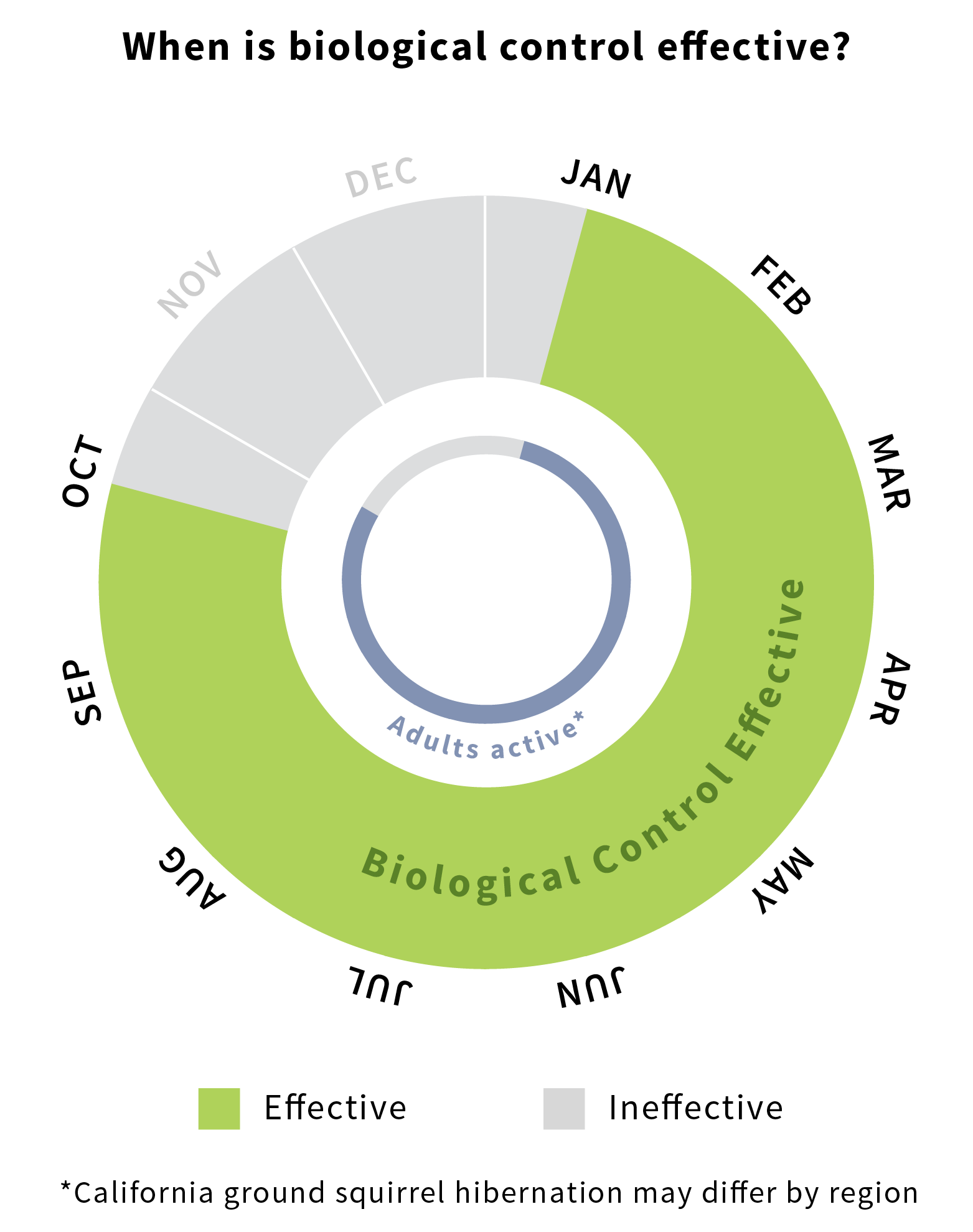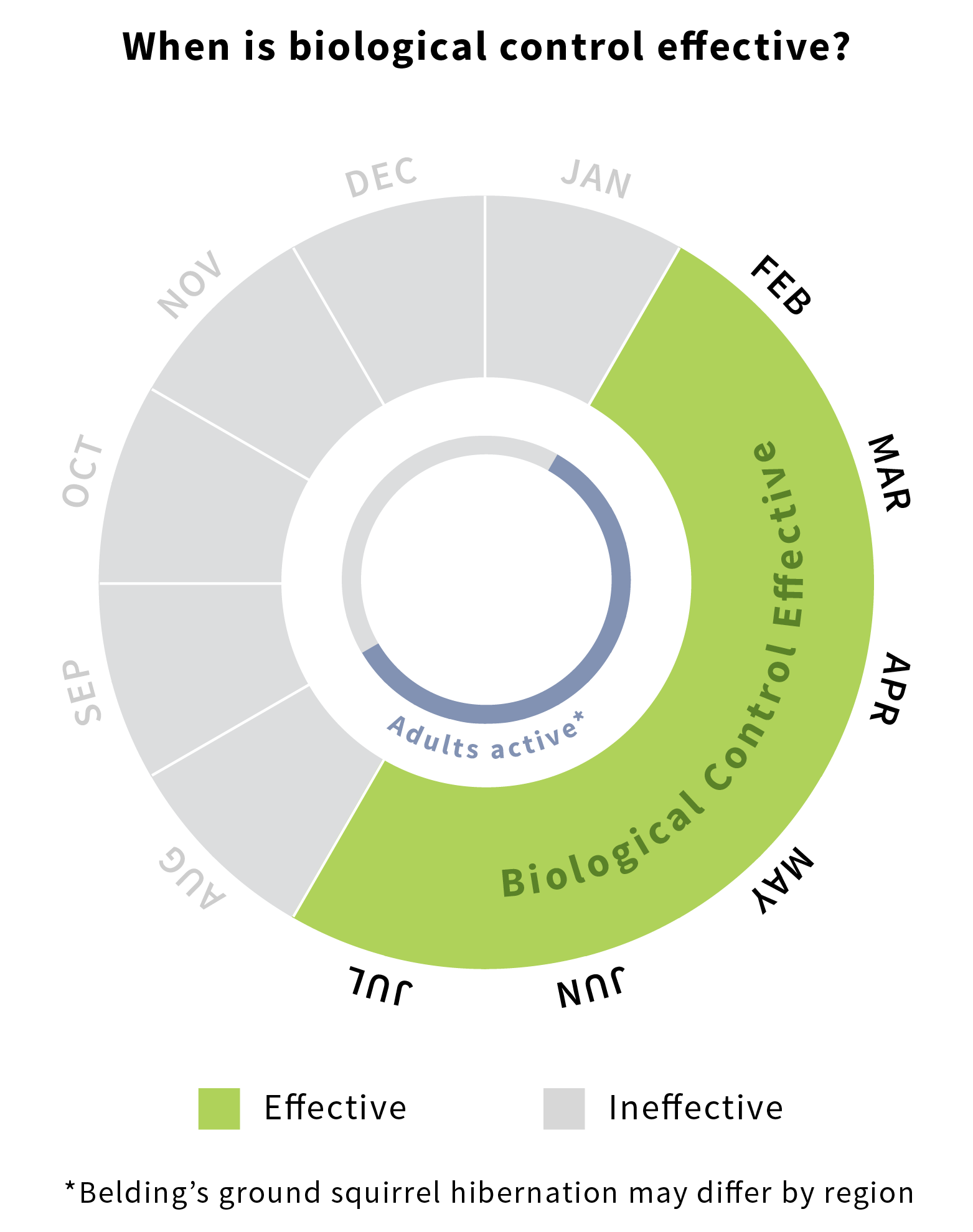Biological Control
|
In California, predators of ground squirrels include red-tailed hawks, eagles, and coyotes. As ground squirrels and their native predators have evolved over hundreds of years, ground squirrels have developed behaviors and abilities to avoid predation. In certain habitats, ground squirrels are frequent prey of rattlesnakes, though some ground squirrels have evolved a resistance to snake venom. Owls are nocturnal and do not generally prey on diurnal ground squirrels.
In the majority of situations, predators are not able to control ground squirrel populations. Dogs may discourage ground squirrels from entering yards and other small areas, but they cannot control established squirrel populations. Belding’s ground squirrels often alert each other to predators and other threats. When they sense a moderate threat, the squirrels (usually adult females) will sound an alarm call that sounds like a trill (rapid alteration between two notes). In extreme danger they will produce one short whistle call. California ground squirrels also make alarm vocalizations, and studies of these calls have shown that they distinguish between ground predators and flying predators. |
For both California (above) and Belding's ground squirrel (below), biololgical control can be effective any time that squirrels are active. |



